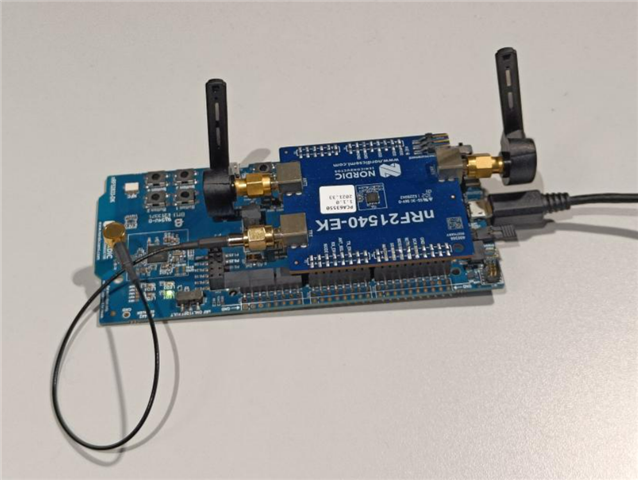Good morning everyone,
I need to develop a firmware for a custom board that features an NRF21540 + NRF52833.
I started the development using the official evaluation kits: an NRF52833 DK + the NRF21540 shield.
I started from the example BLE peripheral "nrf_uart", which I compiled for the board nrf52833_nrf52833 and to which I added the -DSHIELD=nrf21540_ek
as indicated in the section "Working with FEM". I used two SMA 2.4GHz antenna with the nrf21540_ek and I used the nrf_connect smartphone app to
record the RSSI of the advertising.
It turned out that if I use the 21540 shield, I got a slightly worse RSSI than if not using the shield (I created a separate build configuration without using the -DSHIELD option).
I have about -55dBm without shield (about 1mt distance) and between -60 and -65dBm with the shield.
Clearly, I put the board and my smartphone in the same conditions and distance.
So, apparently, the 21540 is not used or worst, is badly affecting the signal....
Do you have any clue why this happens? Should I initialize it somewhere in the main.c source code of the uart app to make it work?
I have a fair experience with nrf52 using the old SDK, but I am rather new to the nrf_connect and zephyr environment, so it is possible that I am missing something really basic....
Thanks in advance for your help!
Lorenzo




